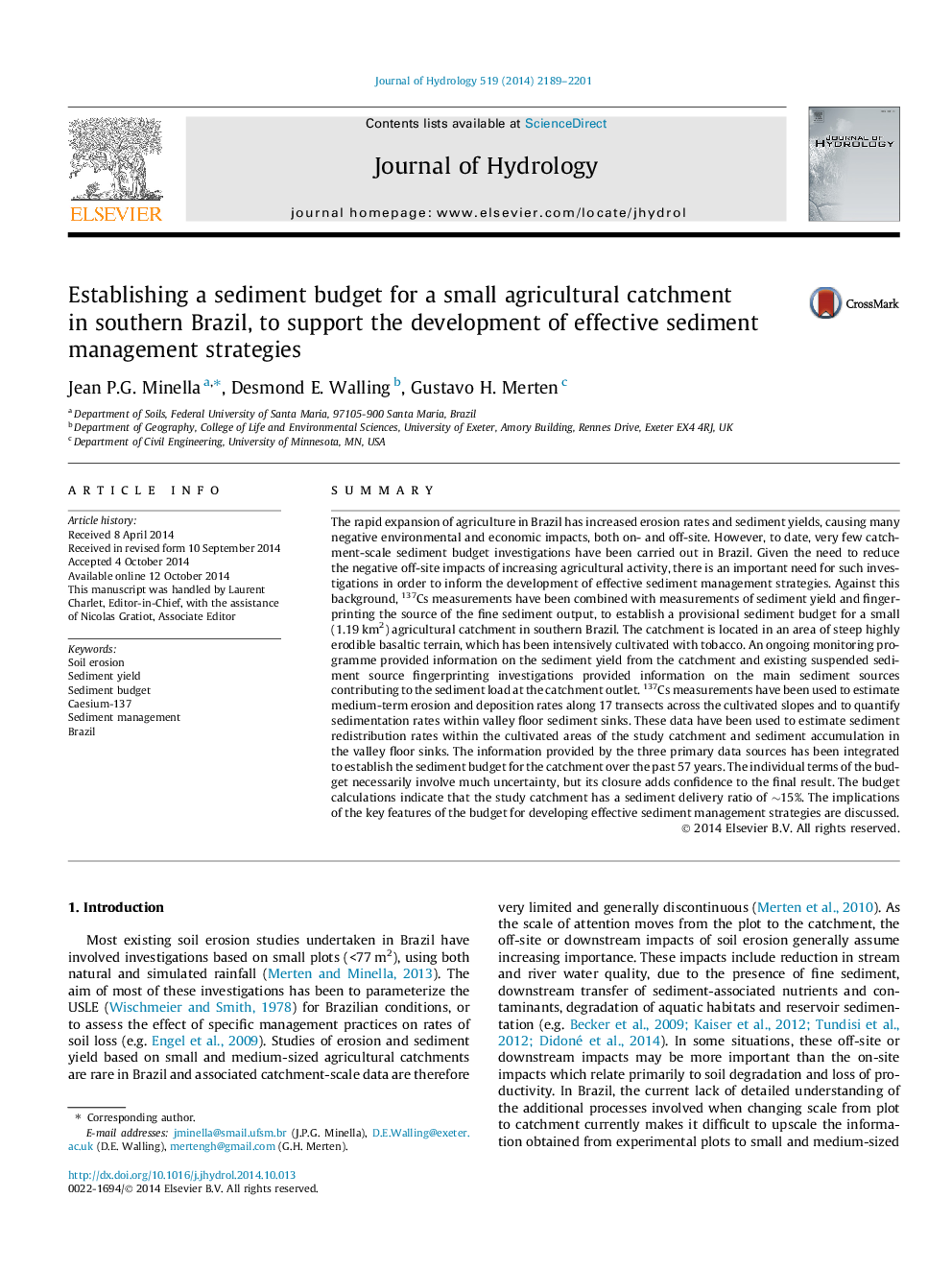| کد مقاله | کد نشریه | سال انتشار | مقاله انگلیسی | نسخه تمام متن |
|---|---|---|---|---|
| 6412095 | 1332896 | 2014 | 13 صفحه PDF | دانلود رایگان |
- Use of 137Cs data, fingerprinting and sediment yield to establish a sediment budget.
- Application of 137Cs measurements at catchment scale.
- The method was applied in a small agricultural catchment in southern Brazil.
- The budget indicates that the catchment has a sediment delivery ratio of 17.7%.
- The results have implications for sediment management strategies and control.
SummaryThe rapid expansion of agriculture in Brazil has increased erosion rates and sediment yields, causing many negative environmental and economic impacts, both on- and off-site. However, to date, very few catchment-scale sediment budget investigations have been carried out in Brazil. Given the need to reduce the negative off-site impacts of increasing agricultural activity, there is an important need for such investigations in order to inform the development of effective sediment management strategies. Against this background, 137Cs measurements have been combined with measurements of sediment yield and fingerprinting the source of the fine sediment output, to establish a provisional sediment budget for a small (1.19Â km2) agricultural catchment in southern Brazil. The catchment is located in an area of steep highly erodible basaltic terrain, which has been intensively cultivated with tobacco. An ongoing monitoring programme provided information on the sediment yield from the catchment and existing suspended sediment source fingerprinting investigations provided information on the main sediment sources contributing to the sediment load at the catchment outlet. 137Cs measurements have been used to estimate medium-term erosion and deposition rates along 17 transects across the cultivated slopes and to quantify sedimentation rates within valley floor sediment sinks. These data have been used to estimate sediment redistribution rates within the cultivated areas of the study catchment and sediment accumulation in the valley floor sinks. The information provided by the three primary data sources has been integrated to establish the sediment budget for the catchment over the past 57Â years. The individual terms of the budget necessarily involve much uncertainty, but its closure adds confidence to the final result. The budget calculations indicate that the study catchment has a sediment delivery ratio of â¼15%. The implications of the key features of the budget for developing effective sediment management strategies are discussed.
Journal: Journal of Hydrology - Volume 519, Part B, 27 November 2014, Pages 2189-2201
